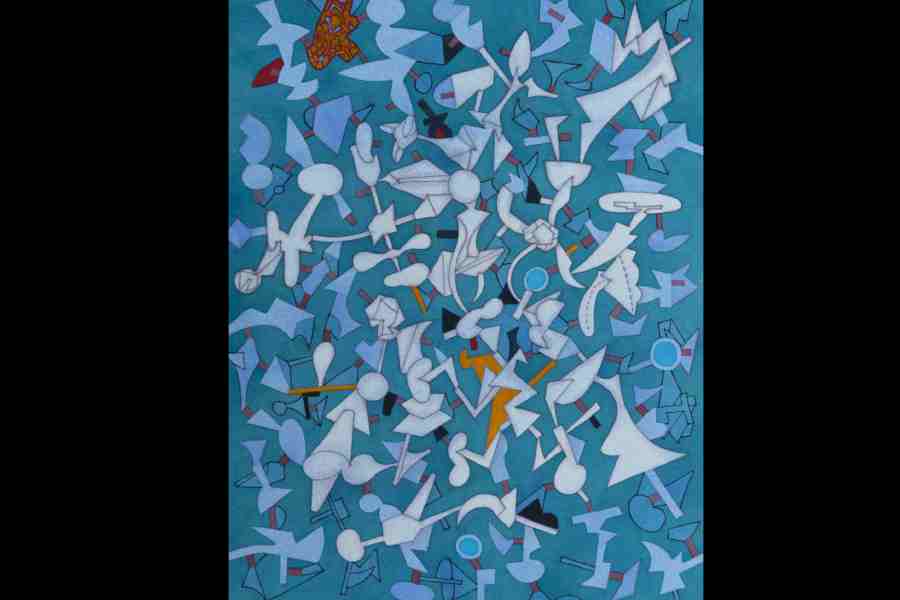Human life on this planet is interconnected. A unique way to examine those links would be to sift through the debris that we leave behind. This is perhaps what Joydip Sengupta aims to do in his exhibition, Random Access Memory (it was on view at the Ganges Art Gallery recently), in which he reimagines the tradition of objet trouvé (found objects). At first glance, the canvas seems littered with seemingly misshapen, disjointed pieces — much like a mound of plastic waste fished out of an ocean (picture). But a closer look reveals familiar shapes in these disparate chunks, which become the nodes that connect people from across the planet. Like the microscopic view of the insides of a cell, these mitochondria-like bits keep life ticking. In this particular series of untitled works, Sengupta’s style is reminiscent of the industrial angularity and geometric abstraction of Constructivism. This is where Sengupta shines.
Sengupta’s vision is less abstract in pieces like Biomorph or Circle of Reason. Continuing with his reimagining of objet trouvé, he lets man, animal, plant, sea life, machine and sundry other objects coexist. The delicate balance of beings on earth and the links among species are cleverly portrayed in Biomorph where a man whose insides are filled with butterflies, plants, corals and so on keeps the balance by standing on one foot while the flamingo next to him has both legs firmly on the ground.
In yet another set of works, fine ink lines are smudged with a wet brush to create a chimera-like effect. Across Seven Seas is the most noteworthy of this lot, with a ship being borne on the back of a fishbone in the shape of a conch shell — a revealing indictment of the toll that human activities take on marine life. In this series too, disparate aspects of life are juxtaposed in a delicate equilibrium.
However, except in the Constructivist works, Sengupta’s vision becomes repetitive, employing the same patterns and symbols over and over again. At times, the profusion of symbols also lacks cohesion.










